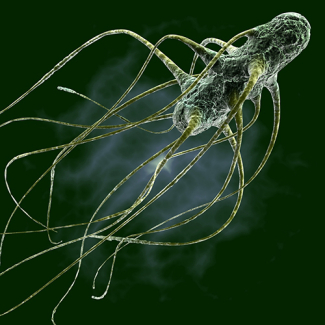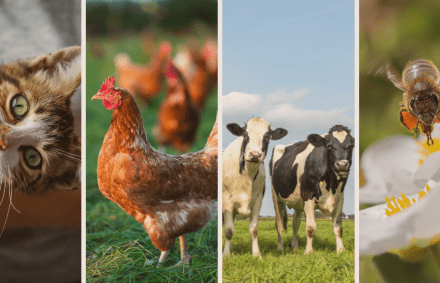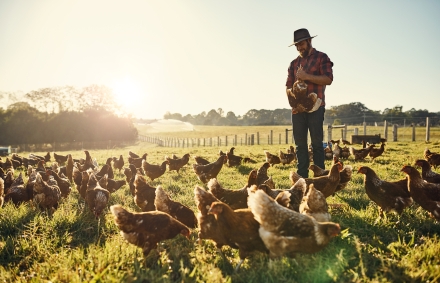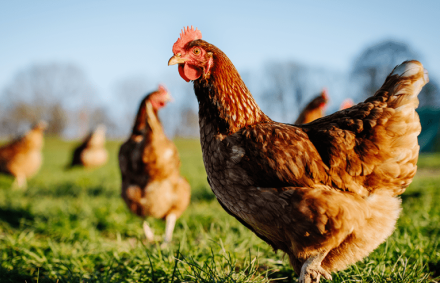
Fowl typhoid is a type of salmonellosis in poultry caused by salmonella gallinarum, a Gram-negative, immobile bacterium capable of generating high morbidity and mortality in susceptible poultry populations. It is a pathology that is widely distributed around the world; however, in recent years its greater prevalence has been limited to regions where socio-economic conditions and cultural production patterns make it more difficult to implement effective plans and measures for its eradication and control.
The importance of this salmonellosis in fowl lies in its mandatory declaration status by the World Organization for Animal Health (OIE), which defines it as part of the group of "Transmissible diseases that are considered to be of socio-economic and/or public health importance within countries and that are significant in the international trade of animals and animal products"
The age of the birds, their nutritional status, sex, physiological status, stress, environmental hygiene, water quality and conduction systems are some of the factors that affect the severity of a salmonella gallinarum infection, which in some instances may reach mortality rates of 100 % of the population.
Although in some cases the mortality patterns may be significantly lower, the costs of investment in support therapies and the provision of resources to “contain” the harmful effects of this disease are equally important.
Horizontal transmission between birds through contact with contaminated faeces, and even cannibalism, is considered one of the principal routes of dissemination for the disease; however, the presence of fertile eggs from breeding hens positive with salmonella gallinarum may have a very negative effect for the future of a poultry business. It has been found that 3% of contaminated eggs from positive breeders can contaminate 100% of the chicks at the time of their birth.
The foregoing underscores the importance of keeping the flocks free of salmonella gallinarum, particularly in breeding stock within the poultry companies.
This type of avian salmonellosis is common in some countries in South America, Central America, Africa and Asia, while Salmonella Gallinarum has been successfully eradicated from poultry in many other countries, such as the USA, Canada, New Zealand, Australia, Japan, and the majority of European countries. Nonetheless, the prevalence of Salmonella Gallinarum in these disease-free areas may be compromised by the eventual presence of this pathogen in wild and game birds; hence the importance of the epidemiological monitoring of this disease. In recent years, the disease has reappeared in countries that had supposedly eradicated the problem.
The presence of fowl typhoid over the last five years is summarised in the following image, taken from reports made to the OIE and its Zoosanitary Information System (OIE-WAHIS).
World Situation of Fowl Typhoid from 2016 to 2021
Reports on the prevalence of fowl typhoid are affected by the level of organisation and resources that the agencies and institutions responsible for the epidemiological monitoring of this disease may have; on the other hand, we must consider the impact that the reporting of a disease in which the health authorities frequently demand the sacrifice and proper final disposal of positive birds and their waste may have on certain economies.
In the case of countries less accustomed to OIE reports, the presence of unclear and incomplete reports is more common, while in countries where better resources and support from the State can be counted on, it is common to observe how the spread of Salmonella Gallinarum can be controlled and reversed, liming the presence of the disease to specific regions within its territory. Table 1 shows the record of the incidence of Salmonella Gallinarum from 2016 to 2021, according to the reports received by the OIE.
Experiences recorded in countries such as Costa Rica, Algeria, China, Hungary and Russia enable us to infer that an adequate policy of support for poultry producers and coherent comprehensive sanitary measures of a prophylactic nature can reduce the presence of the disease in their territory, which ultimately leads to progress towards better levels of animal-derived protein production.
The need to live with salmonella gallinarum implies that we must promote a radical change in the way we see and manage our poultry farms, always bearing in mind that keeping our breeding stock free from this type of avian salmonellosis is non-negotiable, and is a condition that is key to the future of a stable and prosperous poultry industry in our region.
Comprehensive biosafety programs that contemplate not only the known isolation, hygiene and disinfection standards, but also programmes that guarantee the quality of the water and its distribution systems, control of rodents and other carriers, such as the red mite, within our poultry farms, along with vaccination programmes adapted to the epidemiology of the disease, constitute the set of actions necessary to reverse the presence of salmonella gallinarum in our farms.
In this sense, Calier offers heterologous live vaccines that can generate a certain level of cross-protection against the pathogen, as well as specific inactivated vaccines against salmonella gallinarum without the risk of reversion to virulence.



